Jun 2015
Chronic Lymphocytic Leukemia/SLL
Reviewer(s): Dharam Ramnani, MD
B-cell chronic lymphocytic leukemia/small lymphocytic lymphoma (CLL/SLL) are the most common mature B-cell neoplasms and considered to be different manifestations of the same disease. CLL: It is the most common mature B-cell leukemia in the Western hemisphere and makes up 30% of all leukemias. It mainly affects middle-aged and elderly patients with a male predominance. The neoplastic cells are predominantly in blood and bone marrow. CLL is asymptomatic in most patients and often detected incidentally on complete blood counts. The diagnosis requires absolute mature lymphocytosis of ≥ 5.0 x 109/L sustained for at least 3 months. Immunophenotype: Multicolor flow cytometry shows the following results in a typical case: mature B-cell phenotype with weak monotypic surface immunoglobulin, CD5 coexpression, weak CD20, weak CD22, CD23, CD19, weak CD11c; negative for CD10, FMC7, and CD79b. SLL: In contrast to CLL, SLL is much less common, making up only about 4% of non-Hodgkin lymphomas. The distribution of the neoplastic cells in SLL is mainly extramedullary with very few leukemic cells in blood. The patients are often asymptomatic but may present with lymphadenopathy and splenomegaly.
















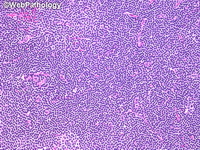
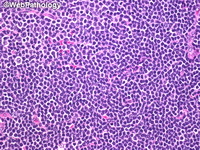
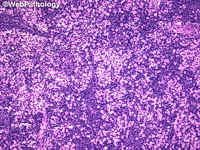
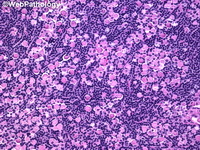
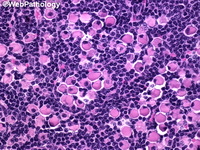





















.jpg)








